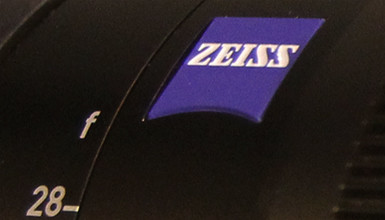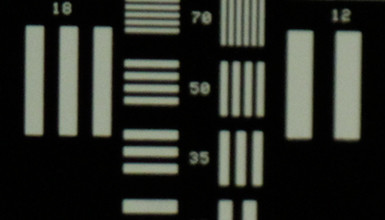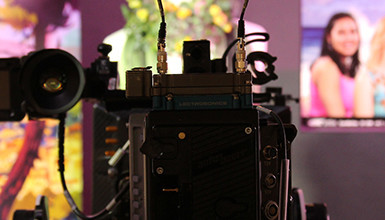Lenses & Optical Accessories
Tutorials & Guides
Sony's new PMW-F3 camera is a full-featured video camcorder with a Super-35mm size sensor. The F3 is suitable for many different styles of production and can be customized with lenses and accessories to make it an even more versatile solution. In this article, we present the many different lenses and accessories that can be used with the camera.
Tutorials & Guides
Panasonic's new AF100 camera is a full-featured video camcorder with a large 4/3rd size sensor. Panasonic designed the AF100 to fit many different production needs and to be highly customizable. In this article, we present the many different lenses and accessories that can be used with the camera.
Tools, Charts & Downloads
Today's cinematographer is constantly switching between a variety of cameras and lenses. For a long time, the professional standard in film and sensor sizes were 16mm, 35mm and 2/3". Recently the choice of digital cameras has increased, and this has created a lot of confusion concerning sensor size, focal length and field of view.
Tools, Charts & Downloads
Numerous cameras available today feature a "35mm-sized sensor." How is this defined? They all vary slightly in size, and some are shaped differently so that, when used for HD shooting, the usable size is dramatically reduced. Our clients frequently ask how to compare these different cameras and how sensor size affects field of view and lens coverage. On this topic, words and numbers can be difficult to interpret, so AbelCine decided to produce a graphical chart to better compare areas of coverage.
Tech News
Zeiss's eagerly anticipated CP.2 lenses, with interchangeable lens mounts, are here! These revolutionary lenses offer Zeiss's superior optical quality in an EF mount that makes them the ideal choice for HDSLR shooters, and the new lenses are more affordable than ever.
Tutorials & Guides
0
A lens is a lens is a lens, and it doesn't know what size sensor or film gate is placed behind it. A lens projects light and the magnification size of that projection is determined by its focal length.
Tech News
Today Zeiss announced pricing for their new Compact Prime Series 2 lenses. With mount interchangeability between PL, EF and F, these lenses are not only more versatile, but also the price has been significantly reduced, making them even more affordable.
Tutorials & Guides
In the last few years, MTF has become a buzzword in both cine and HD lens circles, but there is still a lot of confusion about just what it is, what it can and can't do, and what it means to the cinematographer in a practical sense. In this article, I will attempt to clear up some this confusion by explaining what MTF means from a technical standpoint.
Tutorials & Guides
There's a lot of misinformation out there about rolling shutters on electronic cameras and how they do or do not affect the image. The popularity of the Sony PMW-EX1 and EX3 cameras has really stepped up this debate. But what does it actually mean? In brief, a Global Shutter captures all of the information from every photosite on a chip all at once. A Rolling Shutter reads off the photosites line by line. But that's just the beginning. Let me try to clear up some misnomers and misconceptions.























